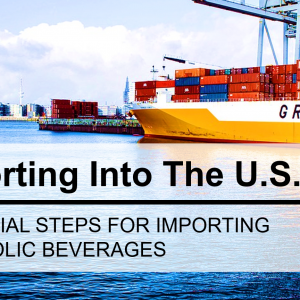“It is not the strongest species that survive, nor the most intelligent, but the ones most responsive to change.” Charles Darwin
Beverage companies have always had to respond to change, but keeping pace with the disruption in markets, consumer trends, supply chains, products, brands, and technology would likely make Darwin’s head spin. “Smaller players are coming in with big ideas to steal market share within categories and segments previously untouchable by the little guys,” says Michael Wagner, “Wags” to those who know him, a Client Success Manager at BevSource. “Established companies can no longer stand still and compete. They must adapt and evolve.”
While growing brands can leverage existing resources and relationships, they don’t often innovate quickly and efficiently enough to maintain the momentum they need to survive. Scaling an already successful product may seem smarter and less risky than innovating for the next big shift. In reality, beverage companies must build a business that can achieve long-term growth and fast, agile innovation. Read on for four ways growing, early-stage beverage brands can create stability and agility, even in uncertain times.
1. Embrace change as an opportunity to innovate
Most entrepreneurs are aware that the game is changing, but it’s hard to grasp the magnitude and widespread impact of the shifts across every aspect of the beverage industry.
“Just three years ago, securing freight was easy. Now prices can hit five to ten times previous pricing per truckload,” says Wags. “And that’s if you can even find someone to take it.”
With a shifting, global economy, change is swift and far-reaching. Wags says they’ve seen aluminum pricing increase several times just this year and additional inflationary cost increases are on the horizon. Even amidst the seeming chaos, companies can build successfully by staying agile and innovative.
“We must acknowledge that things have changed dramatically,” says Wags. “Now is not the time to bury your head in the sand or panic. You have to look at things strategically to find the opportunities.”
Get in Touch With a Beverage Expert Now
2. Give yourself a big runway and spend it wisely
Building the data, expertise, and bandwidth to take a new perspective or approach requires time and a lot of money. So, in addition to budgeting for inflationary, labor, and supply chain-related shifts, brands also need to set aside a significant amount for areas like ongoing market research, new product development, and experiments and pilots.
“You have to be well-funded to be flexible these days,” Wags says. “A decade ago, you could inch through production with smaller cash installments. Now you need a million dollars at your disposal and a lot of technical experience just to get in the game.”
Funding can be tighter during uncertain times, and investors are even more focused on a company’s strategy, and the expertise to execute that strategy.
“Almost every aspect of launching and managing a beverage brand requires technical knowledge that’s changing daily,” says Wags. “If you don’t have the right expertise to manage financial and operational details while containing costs, improving efficiencies, and optimizing pricing, you can blow through a lot of money quickly and not have gotten where you need to.”
3. Focus on what you can control
While brands must be aware of the change, it’s important not to become overwhelmed and miss taking action. Beverage brand owners can focus on core elements: clarity, communication, relationships, and decision making.
If a brand is clear about where they’re headed and can effectively communicate, it can create the level of alignment that allows for agility.
“The better your team understands what’s important to your brand, your key levers for success, and what’s driving you, the more empowered they are to make suggestions and recommendations that move you in the right direction,” says Wags. “Creating alignment at every level of the organization brings opportunities for efficient, successful innovation.”
A well-communicated vision and strategy allow you to see where you need to focus and what you can let go of. The ability to release what you can’t control is critical to surviving and thriving in ongoing change.
Wags, a former head brewer, likens it to the mindset of a brewer who controls the brewing process in the presence of organic materials and ongoing processes.
“You must be meticulous about setting up your plans, structures, and processes,” Wags says. “But you must acknowledge that some things are out of your control and have confidence in your ability to pivot. Set yourself up for success, control as many variables as possible and have faith it will turn out. If you stress too much on the uncontrollable it will drive you to be less effective and productive.”
4. Build a team you trust
Innovation is about bringing data and insights together to solve the path forward creatively. In the beverage world, that work must be done by subject matter experts that can function well as a team. Assembling that team requires knowing what everyone is good at, developing good working relationships, and constantly building trust.
According to Wags, taking the time to build relationships with the people who can help you get where you want to go is an investment that pays back in dividends. “When you have people around you who believe in the brand and want it to succeed in the long-term, you have increased your capacity to take on almost any challenge.”
While there are many challenges ahead for growing beverage companies, there are also a lot of exciting opportunities. With the right mindset and strategy, sufficient resources, and an engaged, high-functioning team, beverage brands can achieve the stability to grow now while innovating for an even brighter future.



